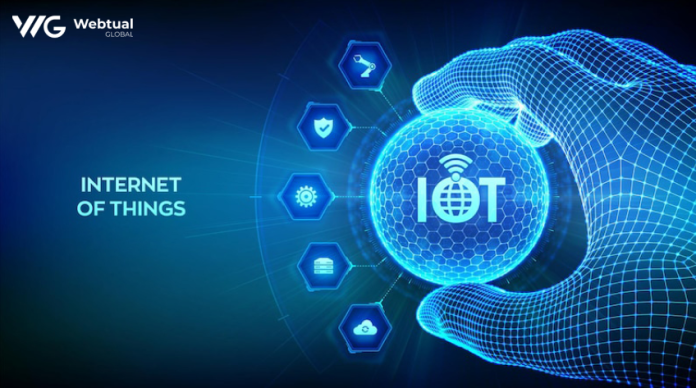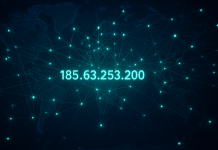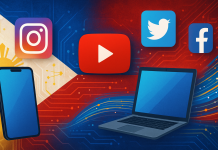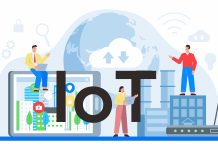The term ‘IoT,’ or the Internet of Things, is referring to a network of connected devices and technologies facilitating their communications with each other as well as with the cloud. Now we’ve got billions of devices linked to the Web, thanks to cheap computer chips and high bandwidth communications. Therefore, it is possible that sensors could be used for data collection and intelligent response to users by everyday devices such as toothbrushes, vacuums, cars or machines.
The Internet of Things is about the integration of everyday things into the internet. From the 90s, computer scientists began incorporating sensors and processors into everyday objects. However, since the chips are very large and bulky, progress has been gradual up to this point. To track high-cost equipment, tiny computer chips known as RFID tags were originally put in place. These chips have also become smaller, faster and cleverer as the size of computing devices has decreased.
Today, the cost of integrating computer power in smaller objects has been significantly reduced. For example, if your MCU has less than 1 MB of installed RAM you can upgrade it to have Alexa functionality with voice services for lighting switches. A global industry has begun to emerge with the aim of filling our homes, offices and businesses with Internet of Things devices. The data is automatically transferred to and from the Internet by these intelligent objects. These invisible computing devices and the technologies connected to them have all been labelled as an Internet of Things.
How does IoT work?
By collecting and exchanging data in real time, a typical Internet of Things system works. There are three components to the Internet of Things system:
Smart devices
It is a device that has been given the capability to perform computing tasks, such as television, security cameras or exercise equipment. It is collecting and transmitting data over the Internet to and from its Internet of Things application, from its environment, user inputs or usage patterns.
IoT application
The IoT application consists of a collection of services and software which integrate the information collected from various Internet of Things devices. It analyses this information and takes informed decisions through the use of machine learning or AI technology. The Internet of Things device will communicate this decision back to it, and the input is then intelligently responded to.
A graphical user interface
You can use a graphical user interface to manage the IoT device or fleet of devices. A simple example is the mobile application or web site that could be used for registration and monitoring of Smart Devices.
Examples of IoT devices
Examples of IoT systems:
Connected cars
There’s a lot of ways cars, for example, could connect to the Internet. You can do it by way of smart dashboard cams, infotainment systems or even connecting your car to the Internet. They’re collecting data to monitor both driver performance as well as vehicle condition from the acceleration, braking, speedometer, odometer, wheels and fuel tanks. There are a number of uses for interconnected cars:
- Improve fuel efficiency and reduce costs by monitoring rental car fleets.
- Helping parents keep an eye on their children’s driving behavior.
- If there’s an accident, notify friends and family automatically.
- The prediction and prevention of vehicle maintenance needs.
Connected homes
Improving efficiency and security of the house, while enhancing home network connectivity is what Smart Home devices are primarily aimed at. Better temperature control is provided by devices such as Smart Outlets that record electricity consumption and intelligent thermostats. IoT sensors can be used by hydroponic systems to monitor the garden, and IoT smoke detectors can identify tobacco smoke. The threat can be detected and prevented through the use of home security systems such as door locks, safety cameras or water leak detection alarms being sent to homeowners.
There are several uses for connected home goods:
- Automatic turning off of equipment when not in use.
- Maintenance and administration of rental properties.
- Searching for lost items such as wallets or keys.
- Automatic automation of mundane activities, such as vacuuming and coffee making.
Smart cities
Urban planning and infrastructure maintenance have become more efficient as a result of Internet of Things applications. In order to solve problems related to infrastructure, health and the environment, governments use Internet of Things applications.
For example, applications for Internet of Things can be used:
- Measures the level of air quality and radiation.
- Identifying the need to maintain critical infrastructure such as roads, bridges and pipelines.
- Efficient parking management will increase profitability.
- Using smart lighting solutions to lower energy costs.
Smart buildings
The use of internet of things applications in buildings is used to improve the effectiveness of operations, for example on college campuses and businesses. For the purpose of smart buildings, internet of Things devices can be used:
- Cutting back on energy usage.
- Diminishing the cost of maintenance.
- Efficient use of space in the workplace.
Industrial IoT
In order to create efficiencies for businesses, Industrial Internet of Things IoT refers to the smart devices that are being used in manufacturing, retailing, health care and other sectors. Industrial equipment, such as sensors and machinery, provides detailed, real-time data for business owners to improve their operations. They provide insight on how to manage the supply chain, logistics, human resources and production in order to reduce costs and increase revenues.
Manufacturing
Enterprise IoT in manufacturing makes use of wearable technology to increase worker safety and predictive maintenance to decrease unexpected downtime. Internet of Things applications can anticipate the failure of a machine prior to it occurring, which will help reduce production delays. To alert staff to potential risks, wearable equipment such as gloves or bands and computer vision cameras are used.
Automobile
The efficiency of automotive manufacture and maintenance is increased through sensor analytics and robotics. Industrial sensors are also used to produce 3D, high resolution pictures of the interior components of a vehicle. If the internet of Things system orders replacement parts by default, diagnostics and troubleshooting can be performed much more quickly.
Logistics and transport
In order to manage supply chains, such as inventory control, vendor relationships, fleet management and planned maintenance, Commercial and industrial Internet of Things devices can help. To monitor assets and to optimize fuel consumption for the shipping route, maritime companies have adopted Internet of Things applications. In particular, this technology makes it possible to monitor very tightly the temperature in refrigerated containers. Smart route and reroute algorithms provide the supply chain managers with informed forecasts.
Retail
Amazon is promoting innovation in retail automation and machine-human collaboration. Robots connected to the Internet are used at Amazon facilities for product tracking, identification, sorting, and transportation.
How can IoT improve our lives?
The Internet of Things has a far-reaching impact on people’s lives and work. It allows machines to spend more energy working, taking over burdensome tasks and improving health, productivity and comfort in our lives.
Connection devices can change the way you’re supposed to wake up, like. Your alarm clock will automatically turn on the coffee machine and open the window blinds when you press the snooze button. The refrigerator will automatically detect the completion of the groceries and order them for home delivery. Your smart oven’s going to tell you the menu for the day, and it’s going to cook preassembled ingredients, and it’s going to make sure your lunch’s ready. Meetings will be scheduled by your smartwatch while your connected automobile automatically instructs the GPS to stop for a fuel refill. In the world of the Internet of Things, there are limitless possibilities!
Conclusion
A new era of connectivity and decision making based on data is emerging from the Internet of Things. The Internet of Things is making a difference in industries, improving efficiency and providing new possibilities for innovation through the interconnection of devices, objects or systems.
The impact of this technology on our everyday lives and the world as a whole is going to become even more profound as it evolves. The future of the internet of things and its potential to become a smarter, more interconnected world will be shaped as we embrace this technological revolution while addressing its challenges.
Author Bio
Name: – Zalu Patel
About: – Zalu Patel is a Content Writer for Webtual Global: IT Solution, writing blogs and content for the company’s clients’ websites. Graduating from Brock University with a Bachelor’s Degree in Journalism, Zalu ventured as a freelance journalist for a year covering politics, social issues, music and culture and has published articles based on said subjects.






